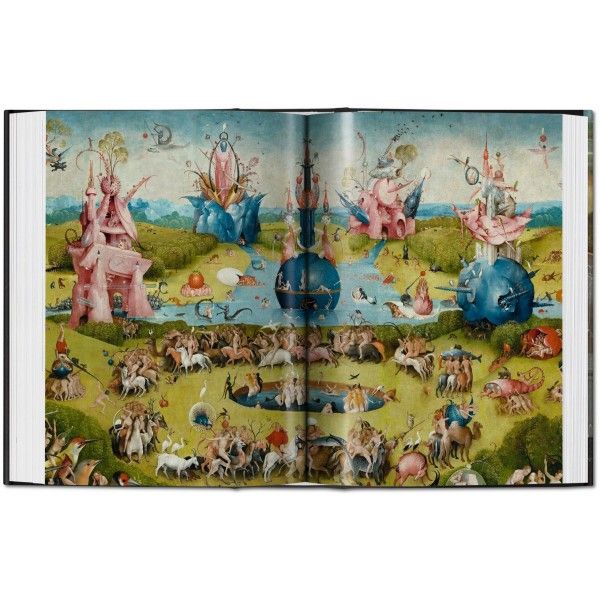
The scene is framed with a Gothic inscription: "Master, quickly cut away the stone, my name is Lubbert Das" Lubbert being a nickname given to a man who was fat and lazy, while Das referred to a "foolish" character in Dutch literature. Rather than extract a stone, however, the doctor/surgeon removes a waterlily. The patient is a peasant while the doctor is identified through his own "foolish" funnel-shaped hat. "Trepanation" was an arcane 15th-century medical procedure that involved drilling into the skull of the sufferer and here it is being presided over by a man and a woman (residents, presumably, of the city in the distance). This work shows the extraction of a so-called "stone of madness" from a man's brain. As early as 1605, indeed, the Spanish monk José de Sigüenza argued that his paintings were like "books of great wisdom and artistic value" and that if there were "any absurdities here, they are ours, not his they are a painted satire on the sins and ravings of mankind".

In fact, Bosch, who in Spain was known as "El Bosco" and was revered long before the nineteenth century revival of interest in his work, is often referred to as the "first Surrealist" and was described by the famous psychoanalyst Carl Jung as the original "discoverer of the unconscious".

Known to many as the "creator of devils", and a purveyor of pictorial nonsense and satire, his paintings have proved very difficult for critics and historians to unravel.Critics and historians have uncovered any number of contemporary themes in his narratives - ecological, social, political - but his most recognizable works, including his greatest masterpiece, The Garden of Earthly Delights (1490-1510), are most dense with religious symbolism and the overarching theme of mankind's timeless moral struggle between imprudence and virtue. Bosch was one of the first artists to represent abstract concepts in his work, often through the narrational device of the triptych.


 0 kommentar(er)
0 kommentar(er)
